Though the World Health Organization (WHO) declared an end to the public health emergency of international concern for COVID-19 back in May, rising COVID cases and new innovations continue to make headlines in December—exemplifying this year as one still dominated by the legacy of the pandemic but also marked by exciting advances in global health research and development (R&D).
As the year comes to an end, GHTC reflects on a few of the global health innovation stories that shaped 2023.
1. COVID-19 leaves a complicated legacy of scientific achievement but growing political backlash.
 While we all hoped the experience of COVID-19 would usher in a new era of proactive health preparedness and improved scientific understanding, 2023 has proved that the legacy of the pandemic is complicated, and history is still actively being written. On the positive side, it has been exciting to see groundbreaking research fueled by COVID-19 funding continue to bear fruit. Applying lessons learned from the pandemic response, researchers and funders alike have sought to accelerate innovative solutions to make countermeasures easier and cheaper to produce, deploy, and administer. For example, this past year brought the announcement of the Biden administration’s more than $5 billion successor to Operation Warp Speed—Project NextGen—to deliver next-generation vaccines and treatments, as well as positive clinical results from Moderna and Pfizer/BioNTech trials on combination COVID-19 and flu shots, and promising research results and funding announcements regarding a variety of needle-free vaccine technologies, including those delivered via nasal spray, inhaler, pen applicator device, and oral film. Taken together, this research could fundamentally alter our approach to controlling COVID-19, as well as ultimately help more people access and benefit from vaccines for a range of deadly diseases.
While we all hoped the experience of COVID-19 would usher in a new era of proactive health preparedness and improved scientific understanding, 2023 has proved that the legacy of the pandemic is complicated, and history is still actively being written. On the positive side, it has been exciting to see groundbreaking research fueled by COVID-19 funding continue to bear fruit. Applying lessons learned from the pandemic response, researchers and funders alike have sought to accelerate innovative solutions to make countermeasures easier and cheaper to produce, deploy, and administer. For example, this past year brought the announcement of the Biden administration’s more than $5 billion successor to Operation Warp Speed—Project NextGen—to deliver next-generation vaccines and treatments, as well as positive clinical results from Moderna and Pfizer/BioNTech trials on combination COVID-19 and flu shots, and promising research results and funding announcements regarding a variety of needle-free vaccine technologies, including those delivered via nasal spray, inhaler, pen applicator device, and oral film. Taken together, this research could fundamentally alter our approach to controlling COVID-19, as well as ultimately help more people access and benefit from vaccines for a range of deadly diseases.
Yet, 2023 could also be characterized as a year of COVID-19 political backlash, particularly in the United States. Fueled by lingering anger over COVID-related public health restrictions, misinformation, and concerns over the origins of the pandemic among their supporters, the Republican-led House of Representatives spent the year calling current and former Biden administration health officials before various subcommittees to testify on their actions, putting science and public health agencies under increasing scrutiny. Additionally, the House has proposed a funding bill for fiscal year 2024 that, if enacted, would slash funding for key agencies that were at the center of the COVID-19 response, including the National Institutes of Health and the Centers for Disease Control and Prevention, as well as cut funding to WHO and limit funding to Chinese government-supported research institutions. Only time will tell whether these efforts ultimately prove more bark than bite or whether they will lead to harmful policies and funding cuts.
2. Attention turns to research on other pandemic and epidemic threats.
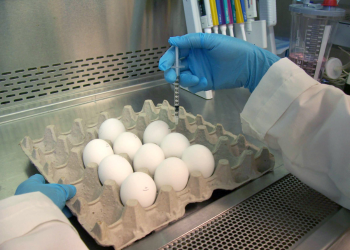 The year brought no rest for the weary when it comes to emerging infectious disease threats. Alongside managing COVID-19 as a here-to-stay threat, in 2023, the world also dealt with a still-smoldering global mpox outbreak, the conclusion of a Sudan Ebola outbreak in Uganda, and outbreaks of Marburg in Tanzania and Equatorial New Guinea. With these threats looming in the backdrop, researchers forged ahead on efforts to boost future preparedness. The Sabin Vaccine Institute and IAVI launched trials for their Marburg and Sudan virus vaccine candidates, respectively. Gavi, the Vaccine Alliance, also announced this year that some remaining funds from COVAX, the COVID-19 vaccine delivery initiative, would be redirected toward further investigational vaccine candidates for those two deadly viruses. Over the summer, Moderna launched a phase 1/2 trial of its mpox vaccine after having begun preclinical work during last year’s major mpox outbreak. Universal influenza shots and combination COVID-19 and flu shots also saw exciting advances this year, with the National Institutes of Health launching a clinical trial testing an mRNA universal flu vaccine and biopharmaceutical company Osivax’s broad-spectrum influenza vaccine candidate showing strong results.
The year brought no rest for the weary when it comes to emerging infectious disease threats. Alongside managing COVID-19 as a here-to-stay threat, in 2023, the world also dealt with a still-smoldering global mpox outbreak, the conclusion of a Sudan Ebola outbreak in Uganda, and outbreaks of Marburg in Tanzania and Equatorial New Guinea. With these threats looming in the backdrop, researchers forged ahead on efforts to boost future preparedness. The Sabin Vaccine Institute and IAVI launched trials for their Marburg and Sudan virus vaccine candidates, respectively. Gavi, the Vaccine Alliance, also announced this year that some remaining funds from COVAX, the COVID-19 vaccine delivery initiative, would be redirected toward further investigational vaccine candidates for those two deadly viruses. Over the summer, Moderna launched a phase 1/2 trial of its mpox vaccine after having begun preclinical work during last year’s major mpox outbreak. Universal influenza shots and combination COVID-19 and flu shots also saw exciting advances this year, with the National Institutes of Health launching a clinical trial testing an mRNA universal flu vaccine and biopharmaceutical company Osivax’s broad-spectrum influenza vaccine candidate showing strong results.
3. mRNA vaccine technology remains an area of growth, particularly for Africa.
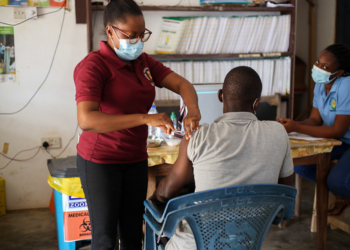 The success of mRNA-based COVID-19 vaccines has inspired a flurry of efforts to leverage mRNA technology to address other diseases and potential pandemic threats, as well as to remedy the inequity in access to new tools faced by African countries during the pandemic.
The success of mRNA-based COVID-19 vaccines has inspired a flurry of efforts to leverage mRNA technology to address other diseases and potential pandemic threats, as well as to remedy the inequity in access to new tools faced by African countries during the pandemic.
BioNTech is advancing mRNA vaccine candidates for malaria, tuberculosis, and HIV, among others, and initiated in April a phase 1 clinical trial to test mRNA vaccine candidates against tuberculosis. This year, newly published research also found that a novel mRNA-based malaria vaccine was effective in animals that had already been exposed to malaria. Additionally, the Coalition for Epidemic Preparedness Innovations this year announced support for a variety of mRNA vaccine candidates against virus families that can affect humans, aiming to create a library of prototype vaccines that can be rapidly adapted as new viral threats emerge.
2023 saw the official launch of the mRNA vaccine technology hub in South Africa, which will pursue vaccines for COVID-19 and other poverty-related diseases to be produced for the African continent. Gavi also announced the African Vaccine Manufacturing Accelerator, which will invest up to $1 billion in boosting African manufacturing, while BioNTech opened an mRNA vaccine factory in Rwanda, which is expected to become part of a decentralized and robust end-to-end mRNA vaccine manufacturing network in Africa. The hope is that these efforts will boost the capacity of African innovators to design, develop, and produce at scale exciting new technologies to tackle diseases with a high burden on the continent and mitigate the equity challenges exposed during the COVID-19 pandemic.
4. Two vaccines for malaria are now recommended.
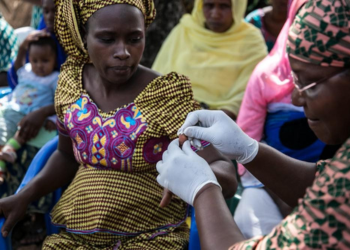 In October, WHO recommended the R21/Matrix-M malaria vaccine, developed by the University of Oxford—two years after recommending RTS,S, the first malaria vaccine—adding another important tool to the world’s arsenal of malaria control interventions. Additionally, results reported in late 2023 about the pilot rollout of RTS,S showed positive findings about the lives it has already saved, making the case for a broader rollout of RTS,S and the potential of integrating R21 into multipronged efforts to fight malaria, as well as hopefully encouraging further innovation in the space. While right now supply of both malaria vaccines remains constrained, manufacturers of both vaccines have agreed to scale up production to meet global demand.
In October, WHO recommended the R21/Matrix-M malaria vaccine, developed by the University of Oxford—two years after recommending RTS,S, the first malaria vaccine—adding another important tool to the world’s arsenal of malaria control interventions. Additionally, results reported in late 2023 about the pilot rollout of RTS,S showed positive findings about the lives it has already saved, making the case for a broader rollout of RTS,S and the potential of integrating R21 into multipronged efforts to fight malaria, as well as hopefully encouraging further innovation in the space. While right now supply of both malaria vaccines remains constrained, manufacturers of both vaccines have agreed to scale up production to meet global demand.
5. Two major firsts for NTDs.
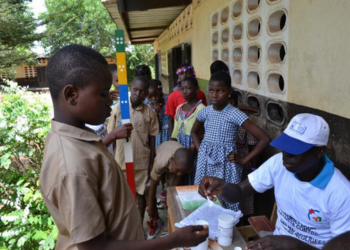 2023 saw two major firsts for innovation against neglected tropical diseases (NTDs), which hopefully will inspire further investment to fill the growing funding shortfalls in NTD R&D.
2023 saw two major firsts for innovation against neglected tropical diseases (NTDs), which hopefully will inspire further investment to fill the growing funding shortfalls in NTD R&D.
In November, the US Food and Drug Administration announced its approval of the world’s first vaccine against chikungunya, a chronic and debilitating disease that has no specific treatment, which has become an increasing global threat due to climate change. The single-dose shot was developed by Valneva.
A month prior, Johnson & Johnson presented new data showing that its pill for dengue fever appeared to protect against a form of the virus in a small human challenge trial done with the Johns Hopkins School of Public Health, providing hope for the first-ever specific treatment for dengue, a serious disease that currently threatens about half of the world’s population, which is similarly a growing threat around the world due to climate change.
6. Setbacks and hope in HIV innovation.
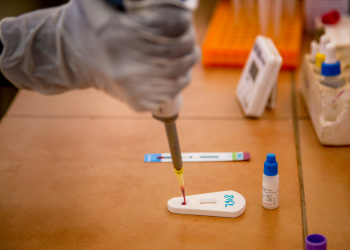 Last month brought disappointing news for the global health community as researchers from the PrEPVacc trial that was testing two different HIV vaccine regimens in Africa announced that the study had been shut down after an independent data monitoring committee concluded there was little or no chance the study would demonstrate efficacy. This leaves no efficacy trials underway globally for HIV vaccines.
Last month brought disappointing news for the global health community as researchers from the PrEPVacc trial that was testing two different HIV vaccine regimens in Africa announced that the study had been shut down after an independent data monitoring committee concluded there was little or no chance the study would demonstrate efficacy. This leaves no efficacy trials underway globally for HIV vaccines.
While this vaccine outcome is certainly discouraging, in more welcome news, 2023 saw exciting developments in efforts to expand affordability and access to long-acting pre-exposure prophylaxis (PrEP) options. In May, Indian drug company Cipla announced that a generic version of cabotegravir long-acting (CAB-LA)—the first long-acting injectable PrEP option—will be manufactured at its plants in South Africa for the first time, which could potentially offer millions of people at risk of HIV infection in Africa access to this drug. In December, GHTC had the privilege of honoring the partners, led by ViiV Healthcare, that developed and are accelerating access to CAB-LA for PrEP for their efforts to advance this groundbreaking new product that could transform global HIV prevention efforts.
2023 also saw Population Council announce that South African company Kiara Health will start producing vaginal rings for HIV prevention in the next few years, which could make the innovative tool cheaper and more readily available to women in Africa. The dapivirine ring, which has been approved by nearly a dozen countries and WHO offers women an alternative long-acting HIV prevention method that can be used discretely without a sexual partner’s knowledge or consent.
7. Urgency and awareness of AMR continues to rise.
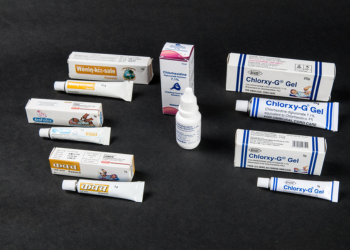 Over the summer, WHO published its first global research agenda for antimicrobial resistance (AMR), outlining topics and needed tools that researchers should focus on to address its rise. The summer of 2023 also saw the largest ever investment from a country in global AMR surveillance—£210 million from the United Kingdom to support the Fleming Fund’s activities in strengthening surveillance and workforce capacity in countries where the threat of AMR is the highest, including investing in new genome sequencing technologies.
Over the summer, WHO published its first global research agenda for antimicrobial resistance (AMR), outlining topics and needed tools that researchers should focus on to address its rise. The summer of 2023 also saw the largest ever investment from a country in global AMR surveillance—£210 million from the United Kingdom to support the Fleming Fund’s activities in strengthening surveillance and workforce capacity in countries where the threat of AMR is the highest, including investing in new genome sequencing technologies.
This year also saw some exciting announcements about ongoing and upcoming research to address AMR. The Combating Antibiotic-Resistant Bacteria Biopharmaceutical Accelerator (CARB-X) received renewed support from G7 governments and launched three funding rounds, which elicited more than 200 applications from around the world. The Global Antibiotic Research & Development Partnership (GARDP) announced positive results from an unprecedented global phase 3 clinical trial testing a first-in-class oral antibiotic to treat uncomplicated gonorrhea, which if approved, will be the first new antibiotic for treating the bacterial infection in decades.
Beyond therapeutics, innovation in diagnostics is also essential to addressing AMR. This year, a new study found that a combination of fluorescence microscopy and artificial intelligence was shown to be effective in detecting AMR across multiple antibiotics, a tool that could help health care providers better treat patients with antibiotics and ultimately stall the rise of AMR.
8. Exciting policy developments in the United States and at WHO could boost global health innovation.
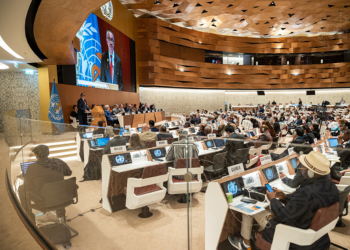 At the 76th World Health Assembly held in May, member states adopted a historic resolution on strengthening global diagnostic capacity. The resolution, which GHTC advocated for alongside partners like FIND, recognizes the need for countries to prioritize access to appropriate diagnostic tests and calls upon countries to put in place national strategies to expand diagnostic testing and utilize diagnostic data in health decision-making.
At the 76th World Health Assembly held in May, member states adopted a historic resolution on strengthening global diagnostic capacity. The resolution, which GHTC advocated for alongside partners like FIND, recognizes the need for countries to prioritize access to appropriate diagnostic tests and calls upon countries to put in place national strategies to expand diagnostic testing and utilize diagnostic data in health decision-making.
In November, GHTC also welcomed the introduction in the US House of Representatives of the Supporting Innovative Global Health Technologies (SIGHT) Act, legislation championed by GHTC to empower the US Agency for International Development to boost its health R&D capabilities. The bipartisan bill would create a distinct disease-agnostic program area and budget line for health R&D within the agency’s Global Health Bureau and establish a Chief Innovation Officer for Health position.
For other fascinating global health news delivered to your inbox weekly and to stay abreast of developments in 2023 and beyond, sign up now to receive GHTC’s R&D News Roundup newsletter.
Image credits from top to bottom: US Department of State, US Food and Drug Administration, USAID in Africa, USAID in Africa/RTI International/Patrick Adams, USAID in Africa, PATH/Georgina Goodwin, PATH/ Patrick McKern, WHO/Pierre Albouy.

 While we all hoped the experience of COVID-19 would usher in a new era of proactive health preparedness and improved scientific understanding, 2023 has proved that the legacy of the pandemic is complicated, and history is still actively being written. On the positive side, it has been exciting to see groundbreaking research fueled by COVID-19 funding continue to bear fruit. Applying lessons learned from the pandemic response, researchers and funders alike have sought to accelerate innovative solutions to make countermeasures easier and cheaper to produce, deploy, and administer. For example, this past year brought the announcement of the Biden administration’s more than $5 billion successor to Operation Warp Speed—
While we all hoped the experience of COVID-19 would usher in a new era of proactive health preparedness and improved scientific understanding, 2023 has proved that the legacy of the pandemic is complicated, and history is still actively being written. On the positive side, it has been exciting to see groundbreaking research fueled by COVID-19 funding continue to bear fruit. Applying lessons learned from the pandemic response, researchers and funders alike have sought to accelerate innovative solutions to make countermeasures easier and cheaper to produce, deploy, and administer. For example, this past year brought the announcement of the Biden administration’s more than $5 billion successor to Operation Warp Speed— The year brought no rest for the weary when it comes to emerging infectious disease threats. Alongside managing COVID-19 as a here-to-stay threat, in 2023, the world also dealt with a still-smoldering global
The year brought no rest for the weary when it comes to emerging infectious disease threats. Alongside managing COVID-19 as a here-to-stay threat, in 2023, the world also dealt with a still-smoldering global  The success of mRNA-based COVID-19 vaccines has inspired a flurry of efforts to leverage mRNA technology to address other diseases and potential pandemic threats, as well as to remedy the inequity in access to new tools faced by African countries during the pandemic.
The success of mRNA-based COVID-19 vaccines has inspired a flurry of efforts to leverage mRNA technology to address other diseases and potential pandemic threats, as well as to remedy the inequity in access to new tools faced by African countries during the pandemic.  In October, WHO
In October, WHO  2023 saw two major firsts for innovation against neglected tropical diseases (NTDs), which hopefully will inspire further investment to fill the
2023 saw two major firsts for innovation against neglected tropical diseases (NTDs), which hopefully will inspire further investment to fill the  Last month brought disappointing news for the global health community as researchers from the PrEPVacc trial that was testing two different HIV vaccine regimens in Africa
Last month brought disappointing news for the global health community as researchers from the PrEPVacc trial that was testing two different HIV vaccine regimens in Africa  Over the summer, WHO
Over the summer, WHO  At the 76th World Health Assembly held in May, member states adopted a
At the 76th World Health Assembly held in May, member states adopted a